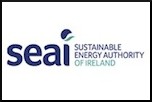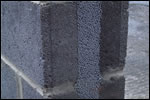The House of Tomorrow, 1933
In his third column on visionary eco-buildings of the 20th century, Dr Marc Ó Riain looks at the pioneering passive solar designs of Fred Keck.
In his third column on visionary eco-buildings of the 20th century, Dr Marc Ó Riain looks at the pioneering passive solar designs of Fred Keck.
Solecco Solar launched its innovative solar roof tile solution at the UK Construction Week trade show which took place on 10 to 12 October at the NEC in Birmingham.
Home of the Northern Ireland parliament in Belfast, Stormont has recently undergone a major refurbishment, including a completely new plumbing and heating system that provides catering and washing facilities on a daily basis for over 1000 people. The building itself has changed little over the years (it was opened in 1932) and therefore presented an interesting design and installation challenge.
PV specialist Autarco has developed a microinverter which, it says, outperforms traditional inverters in terms of yield per module, flexibility, safety and reliability. It combines “ultra-reliable components with a distributed architecture that makes for a more resilient power plant”, according to Autarco sales director Lloyd Lawson
Hitting Enerphit – the passive house standard for retrofits – wasn’t challenging enough for one Yorkshire retrofit project. The team also had to stop the building falling down, and avoid wholesale changes to the building’s external appearance.
The Equinox House house near Kavarna, Bulgaria is a passive building that "delicately interacts with natural phenomena on all levels from embracing local views to tracing universal solar motions," according to its designers, Ignatov Architects.
The government is withdrawing grant support for heat pumps and biomass boilers and reducing grants for other energy efficiency upgrades as part of its new Better Energy national building upgrade programme. The government has allocated an additional €30m to the programme this year in addition to the €60m set aside in this year's budget. It expects the extra funding to support an additional 2,000 jobs in the retrofit sector in 2011.





Since the announcement last September by the Minister for the Environment of substantial improvements to be made under Part L of the Building Regulations, speculation has been rife in the construction industry about what the details of the updated regulations would entail. Jeff Colley examines some of the key parts of a regulatory improvement that will help the Irish construction industry to modernise and meet the demands of a rapidly changing world.
Construct Ireland investigates what measures the Irish government is undertaking to actively encourage the homeowner to switch to non-polluting renewable energy sources.
The development of Coppinger Court, a high density apartment complex on Popes Quay, Cork City, has been broadly received with a warm response, picking up awards in 2004 including the RIAI Best Sustainable Building award.

On Tuesday the 15th of March a passive house, a house that does not need to be heated, was built a few miles outside of Galway. The brain child of Lars Pettersson of Galway based Scandinavian Homes Ltd, it is believed to be the world’s first standardized and factory made passive house.

Recently sold by private tender for over e1.3 million, the ECO House in Shankill, Co. Dublin exceeded auctioneers expectations, an indicative example of the shift from public curiosity to eagerness to invest in contemporary sustainable building.

The first scheme of renewable energy grants for Irish homeowners, the Greener Homes Scheme, was launched on Monday 27th March 2006 and will make grant funding available to homeowners looking to install renewable energy heating technology

The Department of Education has made its commitment to energy efficiency and CO2 reduction clear in developing and bringing into practice targets for primary school design that aim for less than half of the accepted good practice in the field. Project coordinator John Dolan, Senior Engineer with the Department of Education explains how this approach works within normal Departmental budgetary limits to create school buildings that show the way ahead for building designers.

The need to reduce CO2 emissions and energy consumption from buildings has never been more immediate. There is a growing consensus that we must reduce our dependence on rapidly depleting, carbon intensive fossil fuels, which, amongst other things, will involve overhauling how buildings are designed, constructed and used.

Jason Walsh visited the Green Building, a pioneering sustainable development built in Dublin's Temple Bar in 1994, to find out how one of Ireland’s most ground breaking eco designs has been performing over the last decade.